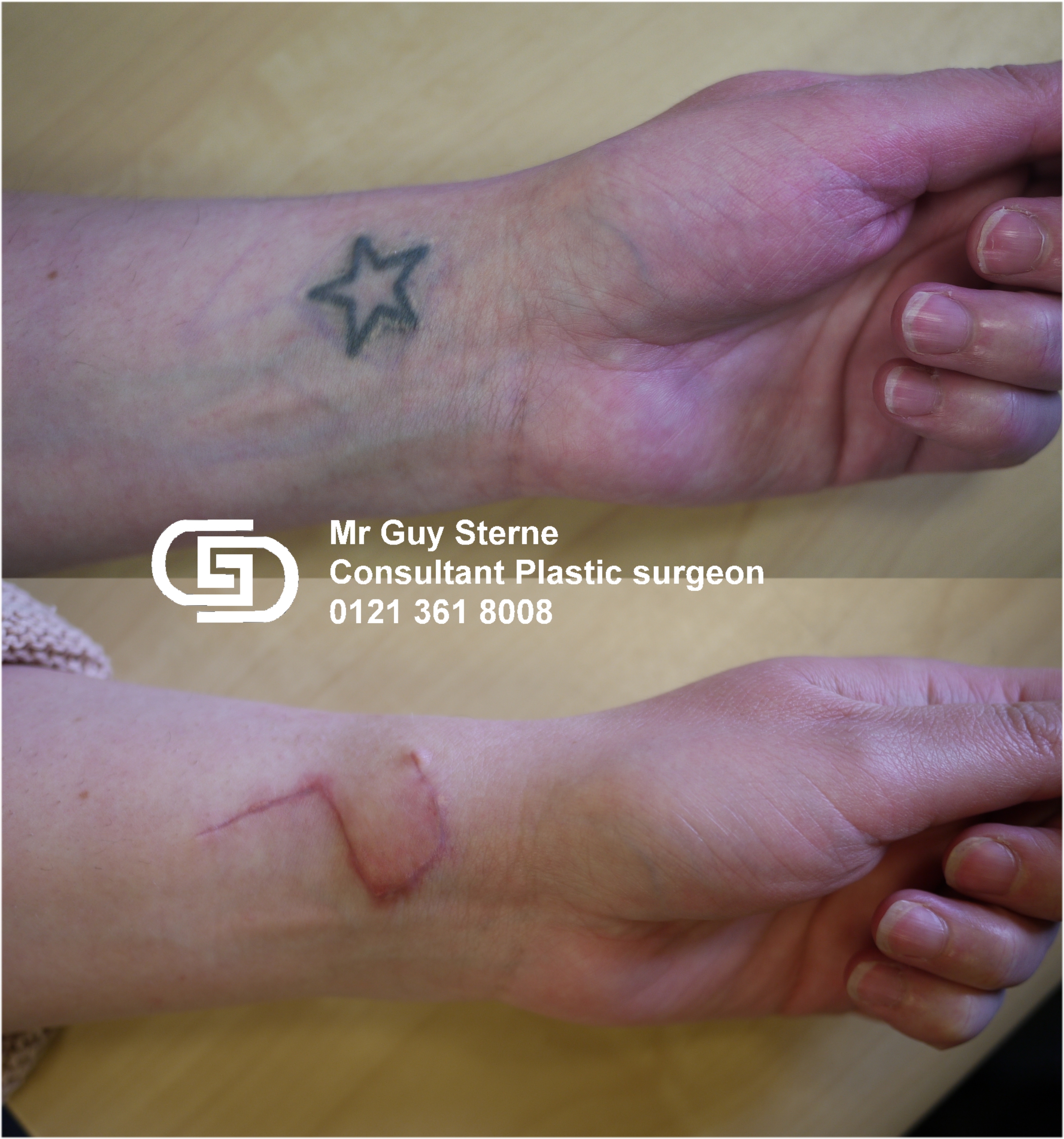Tattoo Removal
A tattoo is created by driving ink into the deeper layers of the skin via a needle. When the ink pigment reaches the middle layer of the skin, certain cells eat the pigment. These cells cannot digest the pigment and so the pigment remains inside these cells and can be seen from the surface of the skin what we commonly call a tattoo.
There are two options for removing a tattoo: surgery or laser depigmentation.
1. Surgery: With surgery, the skin bearing the tattoo is cut out and the hole in the skin is sewn shut to leave a scar. The aim is to leave as small a scar as possible, in the best direction to result in the most hidden scar which often just looks like you have had an operation. Small tattoos can usually be treated in a single procedure under local anaesthetic (with you awake) in the outpatient department. Larger tattoos may need to be removed in two, or more, procedures. This allows the tight skin to stretch and go slack between excisions so that more of the tattoo can be removed after several months (known as serial excision)
2. Laser Treatment: Laser treatment works by firing an intense light at the tattoo. Certain pigments absorb certain lights and heat up. This heat destroys the cells which hold the pigment. This can work quite well with some colours (red, green) but is much less effective with other colours (eg blue-black). However, often the pigment which is released from the cells is simply eaten by other nearby cells and this results in smudging of the tattoo. Occasionally the heating effect may change the colour of the tattoo but not remove it.
You may consider it worth trying Laser treatment in the first instance because if it works well and the colours fade then you would have minimal scarring. But in reality, many many laser treatment sessions are required, which can prove very costly, and the final result is that the colour often fades or smudges but it still looks like a tattoo!







